It’s still spring in Japan!
And what’s more, it’s Golden Week!
That means it’s vacation time!
Oh wait, I think this was my intro from my previous blog. 😅
After enjoying the beautiful pinkish Fuji Shibazakura Festival, my feet led me to Hakone Shrine.
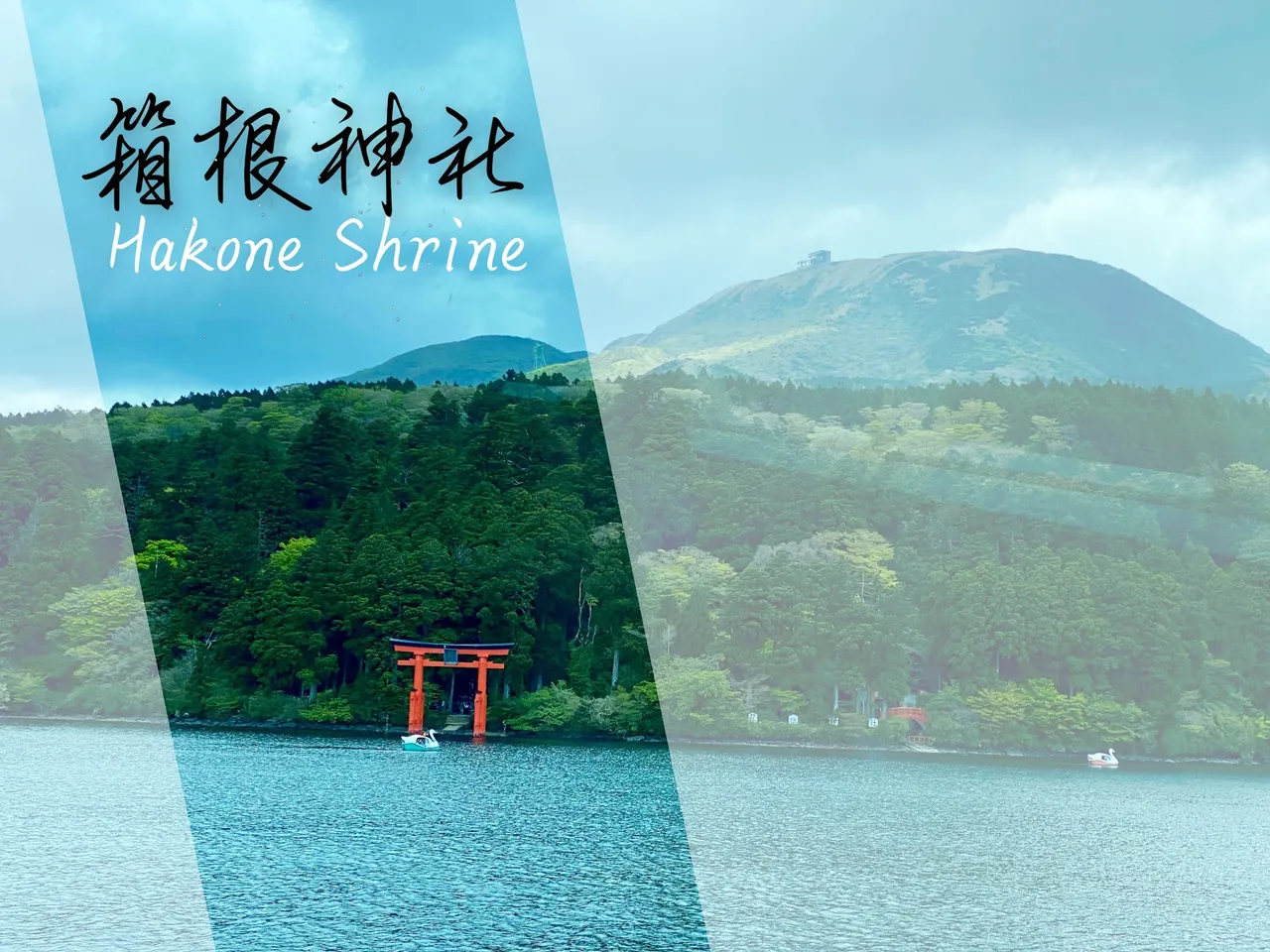
When going to Hakone, you should not miss Hakone Shrine or Hakone Jinja (in kanji: 箱根神社). It is located a few meters walk from Moto Hakone Pier (元箱根), so it is along Lake Ashi (芦ノ湖, read as Ashinoko), and at the foot of Mount Hakone.

Hakone Shrine is a Shinto shrine. It is quite famous because the red gates look like it's floating on water and on clear days, you can see Mount Fuji (富士山 read as Fujisan) on the background.
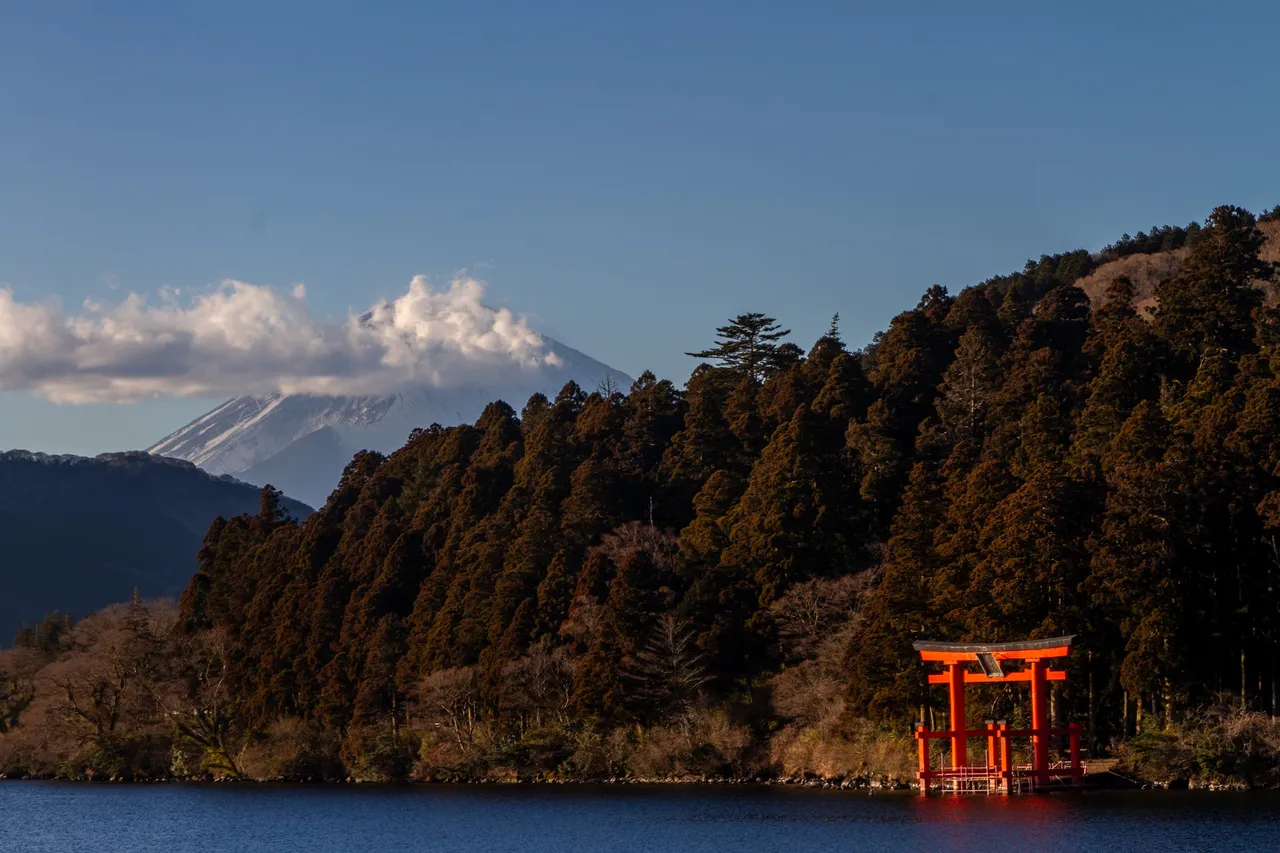 |
|---|
| Source: Unsplash |
Entering the shrine requires you to cleanse yourself with the hand water, located just near the entrance. I don't really practice Shintoism but I still did it because it's also a good manner. Japanese people really cares about manners (マナー).
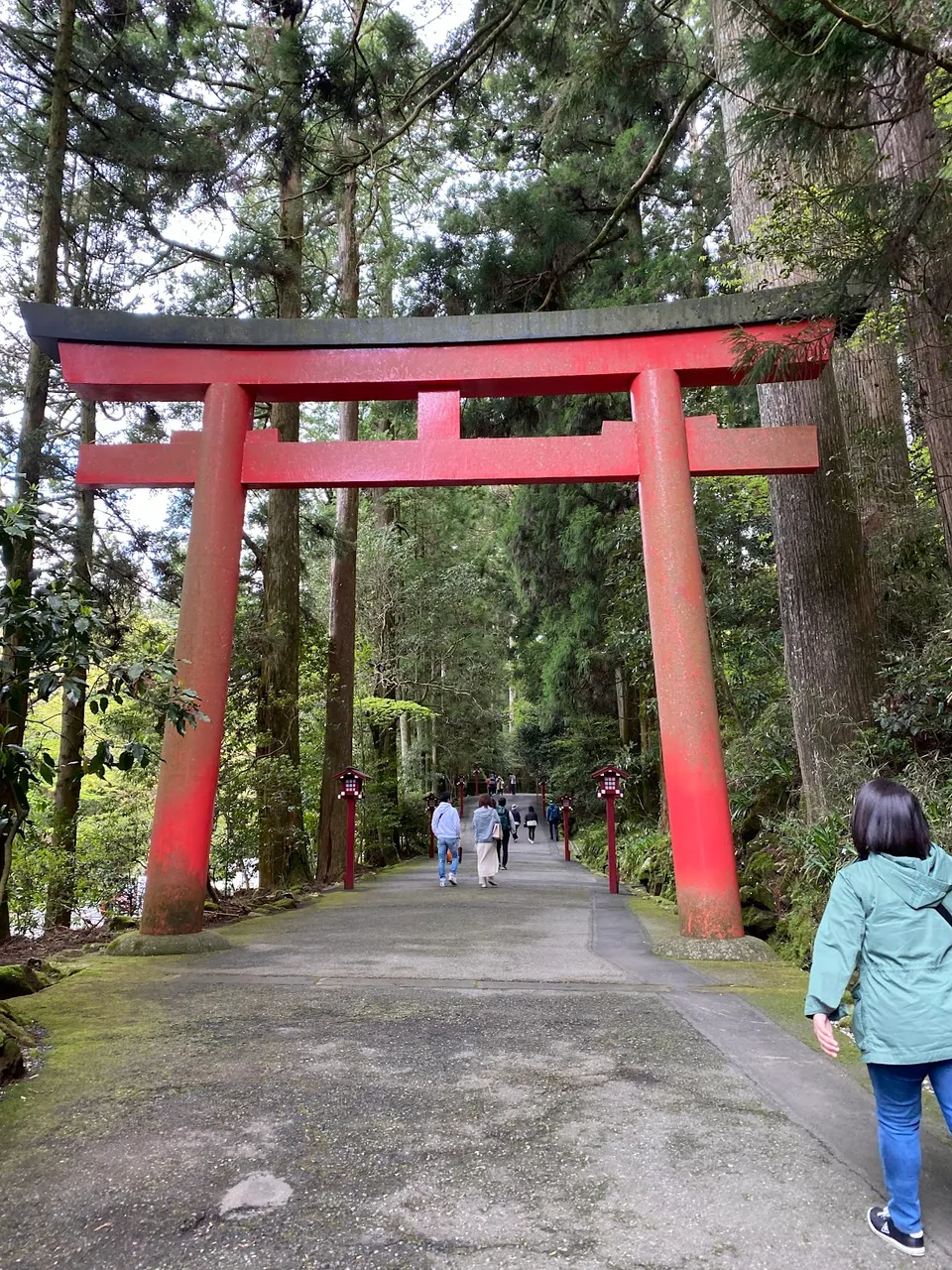
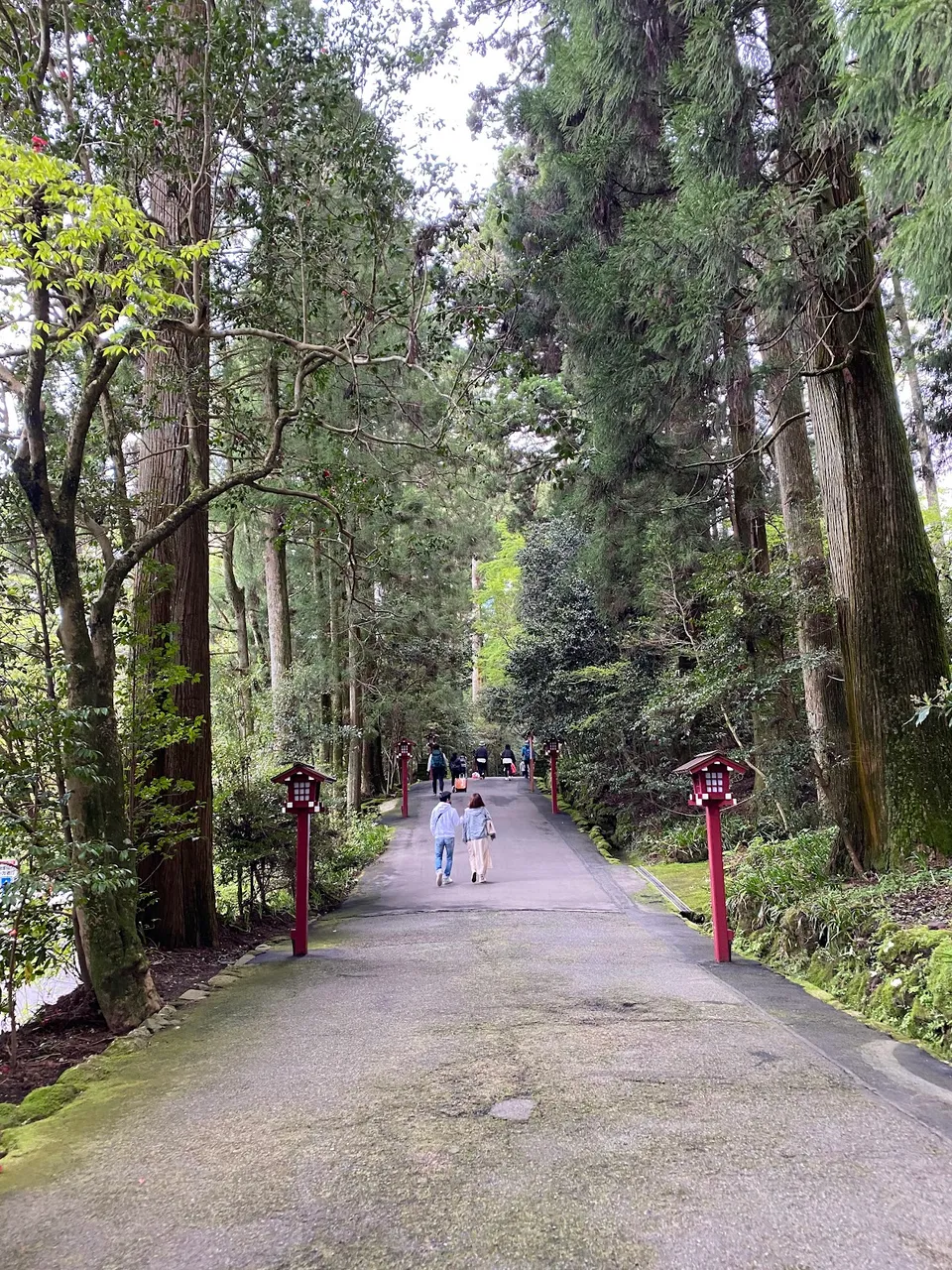
Going up to the main shrine was tiring because of the long stairs (I lack exercise huhuhehe). But shrine goers don't really mind it. Actually, the stairs aren't that long compared to the shrine in Enoshima (I'll have another post about Enoshima).
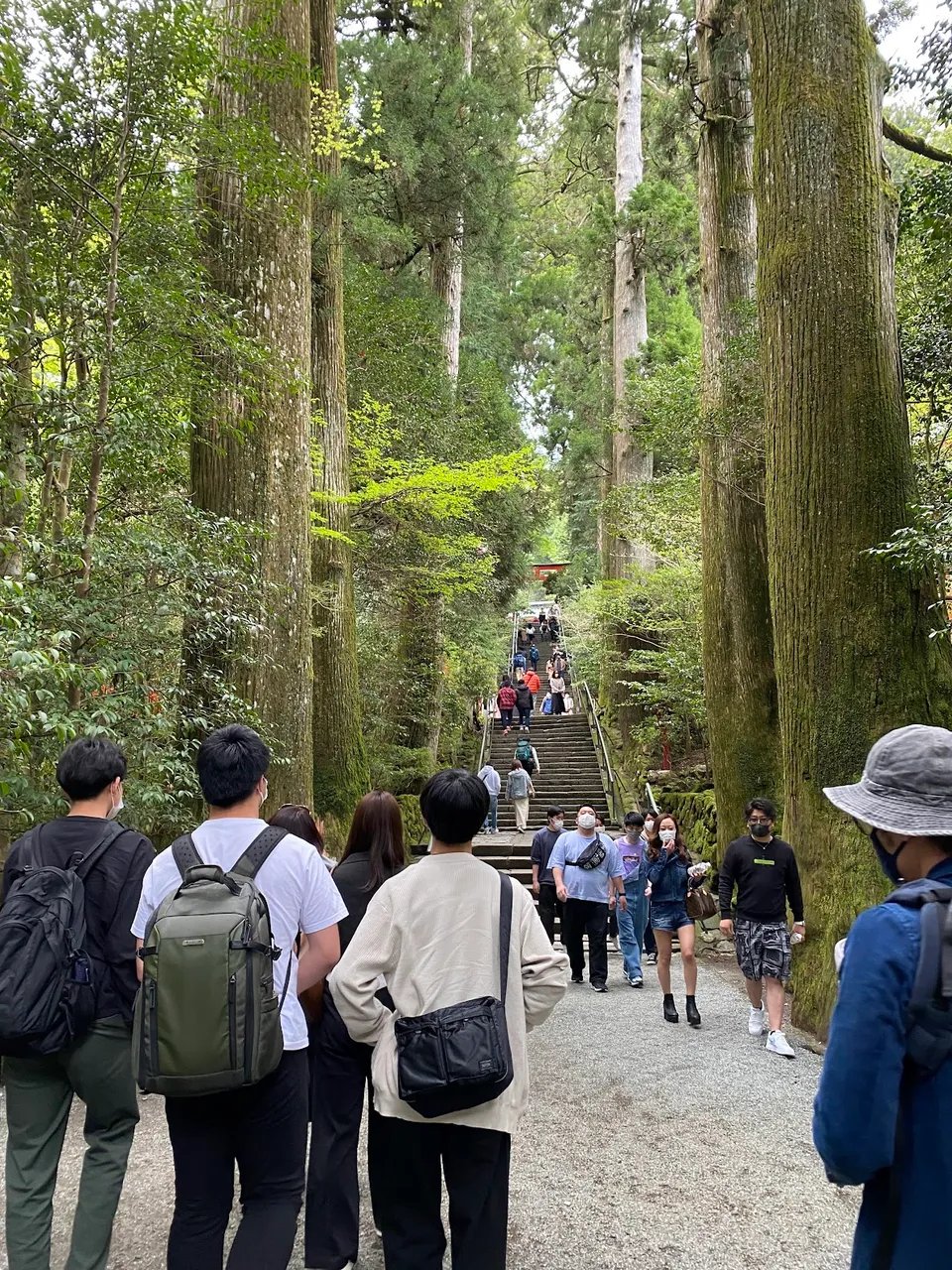
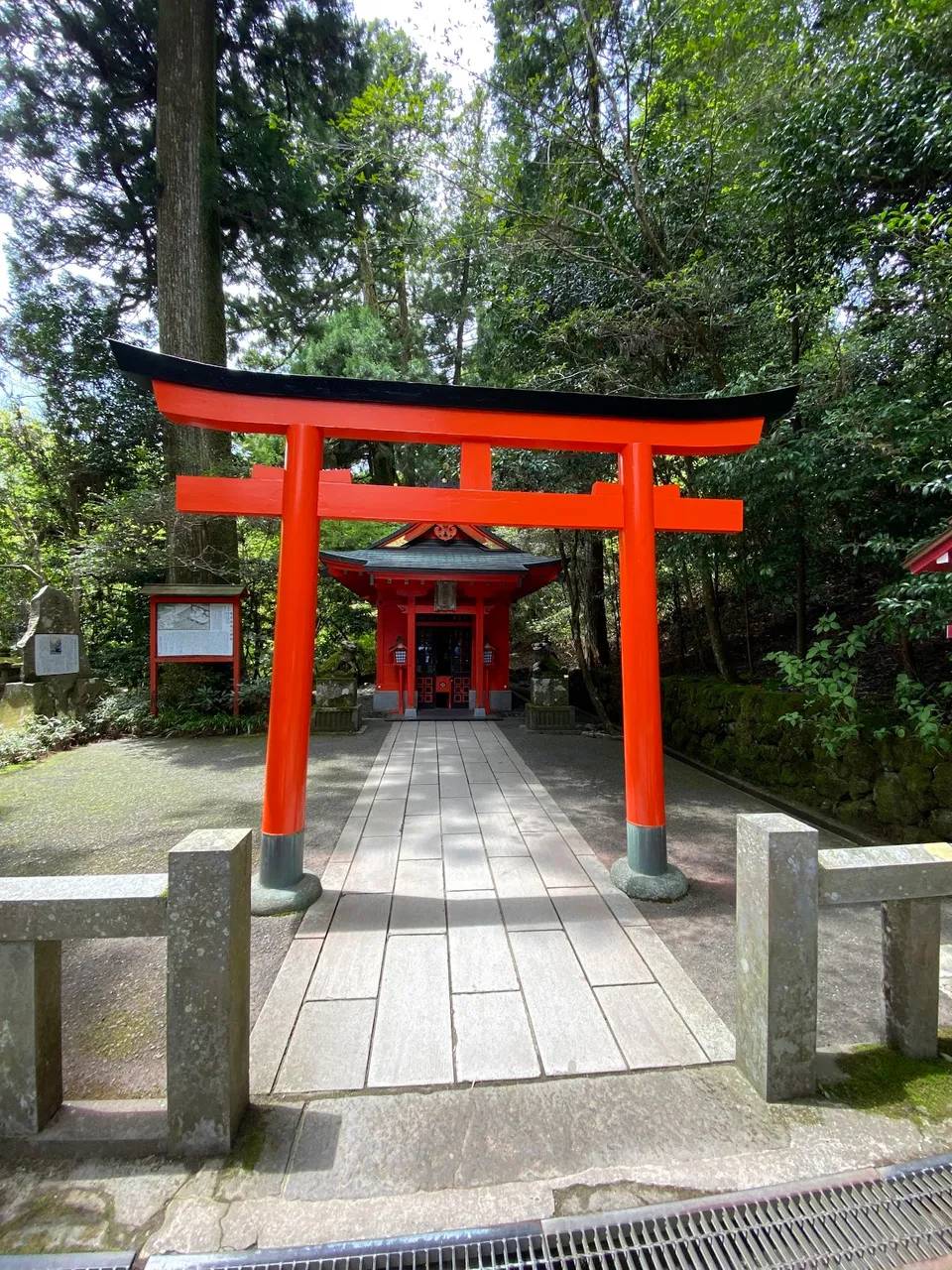

I didn't offer my prayers but there was a long line to be able to pray. I have however tried to get my fortune (おみくじ read as Omikuji). When I visit shrines, I always get Omikuji though I believe or don't believe it - I'm neutral. I just like the feeling of drawing something from the box, like it's some kind of lottery/raffle. Anyways, it was bad luck so I tied it. 😑
When the prediction is bad, it is a custom to fold up the strip of paper and attach it to a pine tree or a wall of metal wires alongside other bad fortunes in the temple or shrine grounds. A purported reason for this custom is a pun on the word for pine tree (松, matsu) and the verb 'to wait' (待つ, matsu), the idea being that the bad luck will wait by the tree rather than attach itself to the bearer. In the event of the fortune being good, the bearer has two options: they can also tie it to the tree or wires so that the fortune has a greater effect or they can keep it for luck.
src: Wikipedia
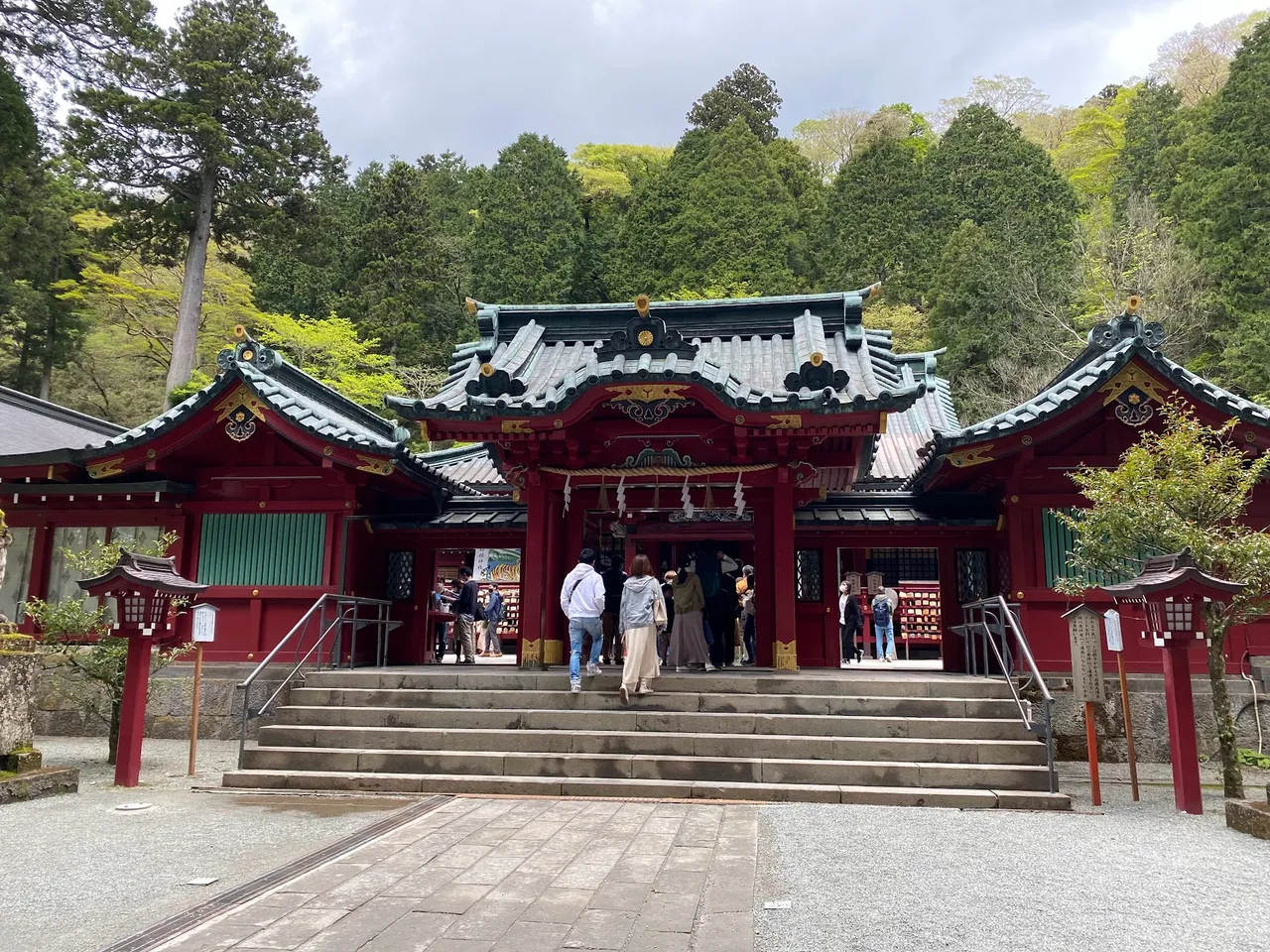
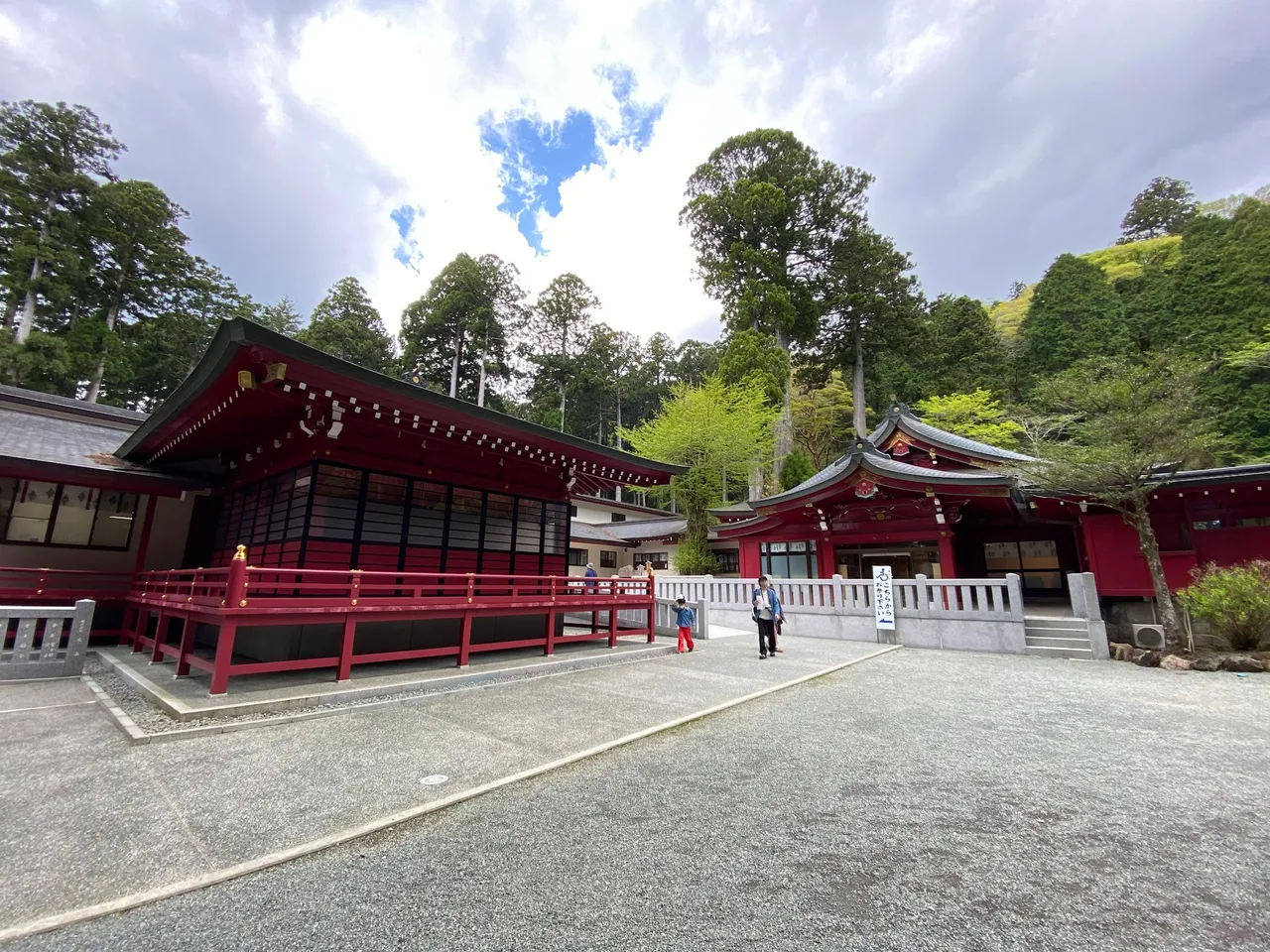
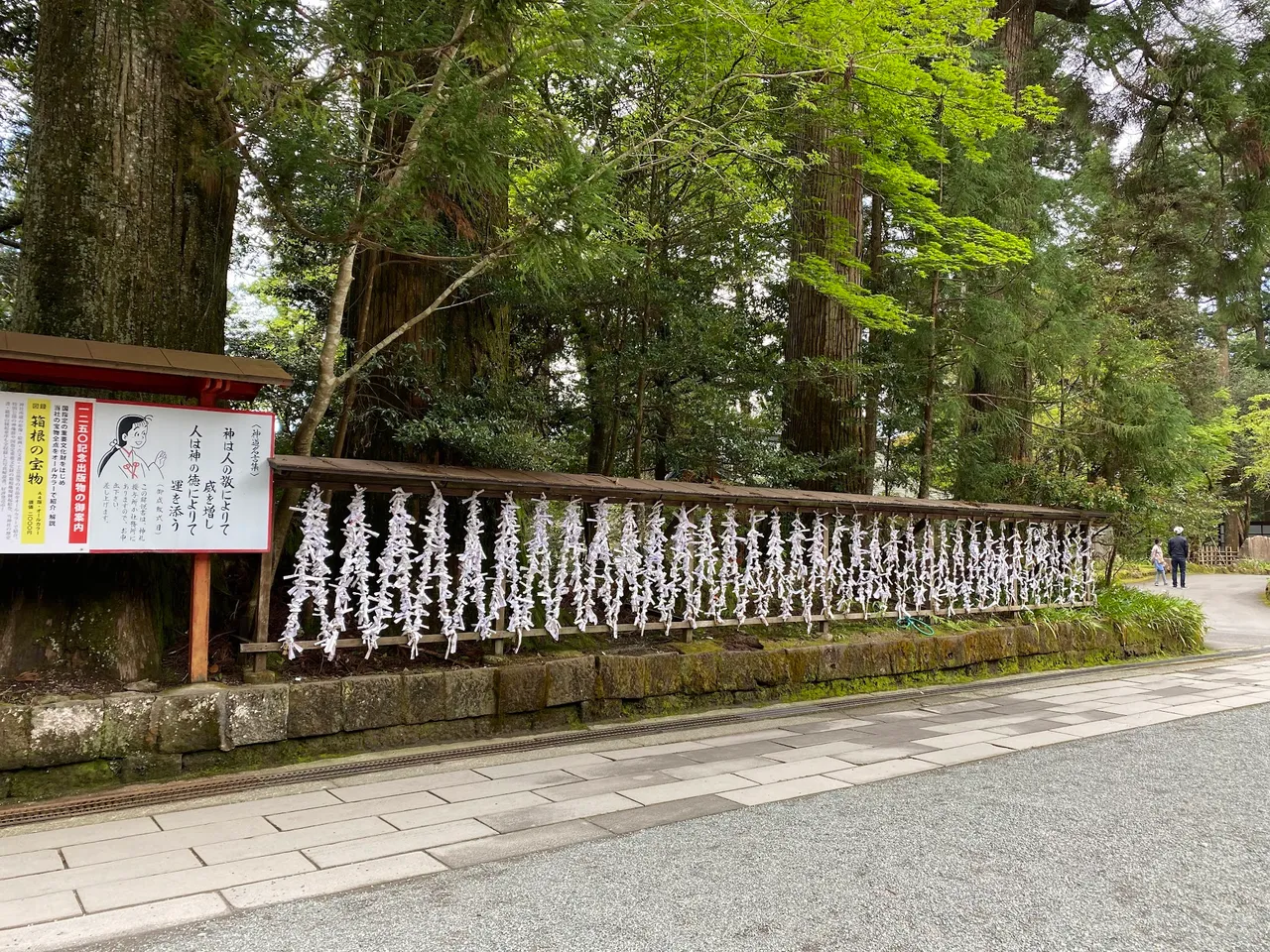
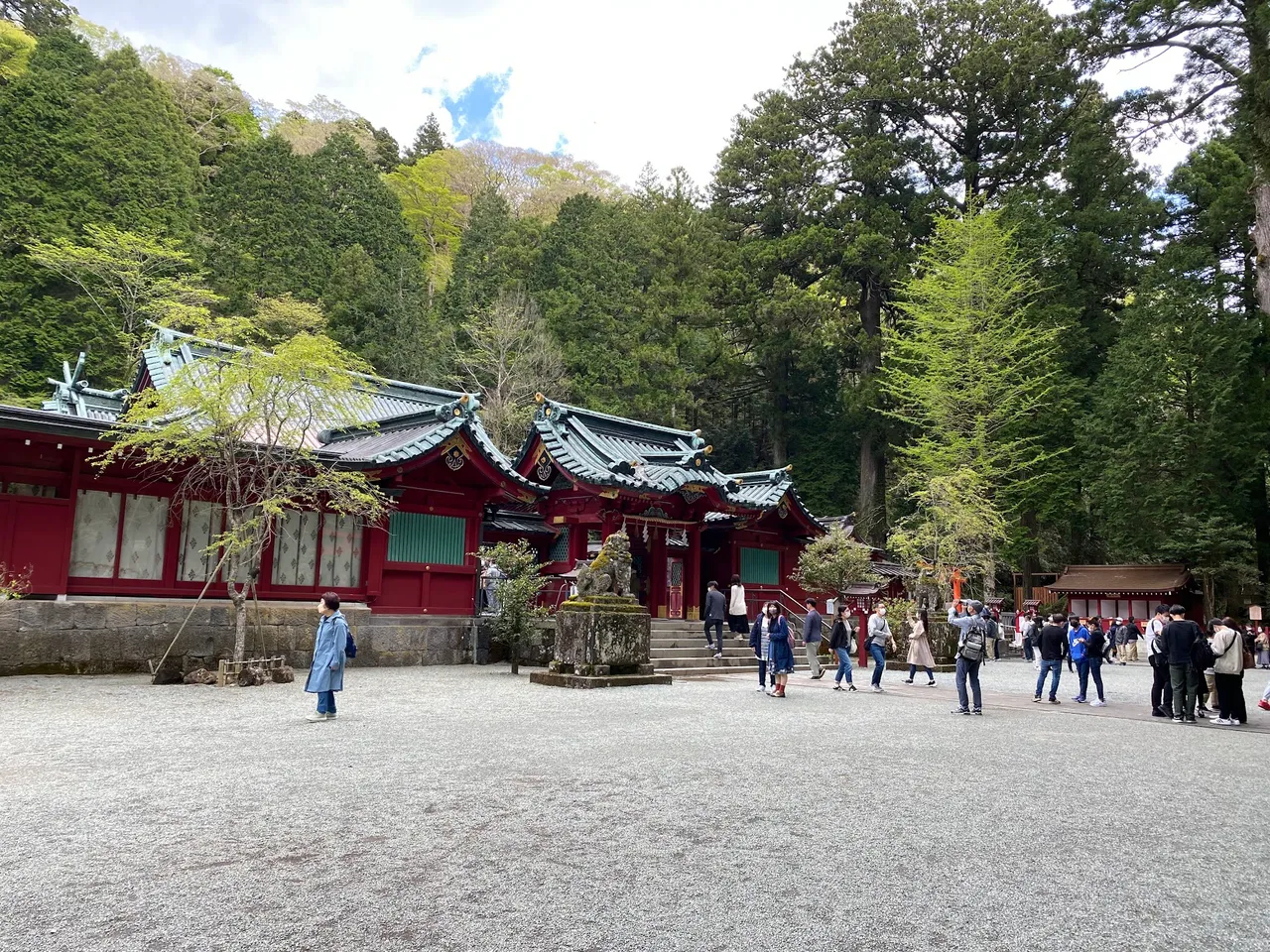
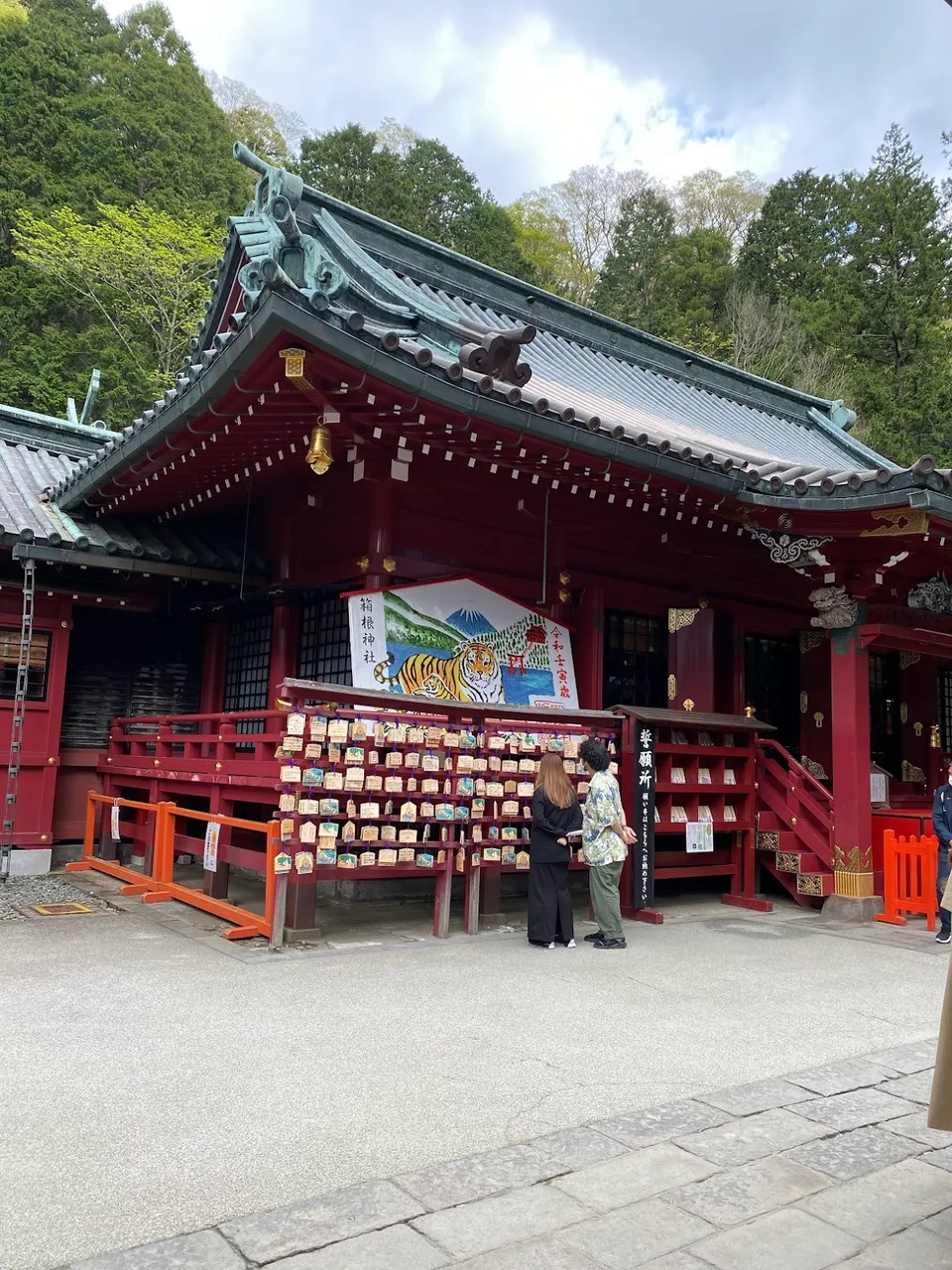
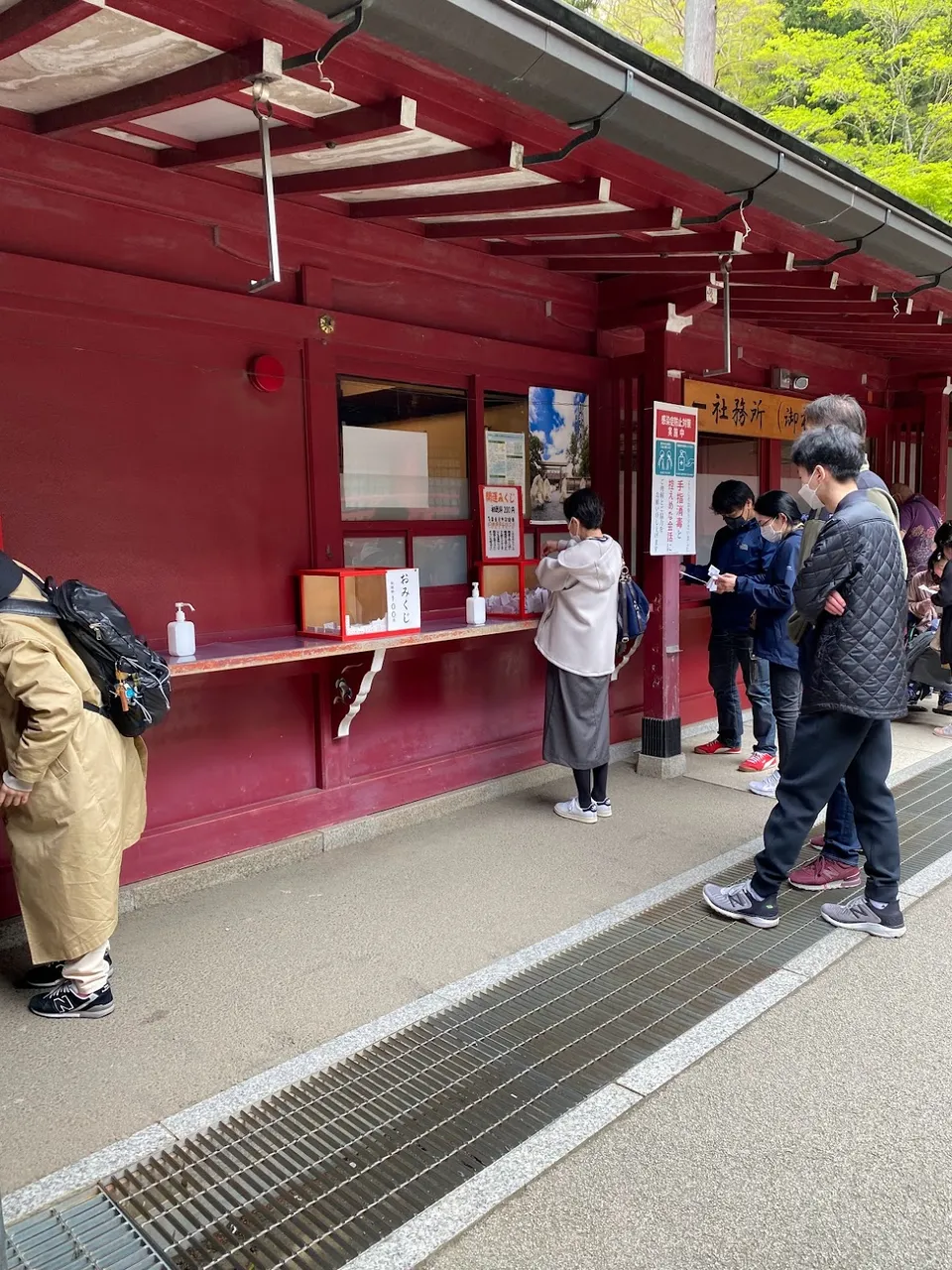
Next to the main hall lies Kuzuryu Shrine (九頭龍神社 read as Kuzuryu Jinja). This sub shrine is dedicated to the protective spirit of the dragon that lives in the lake.
Little kanji lesson:
九頭龍 read as Kuzuryu
九 = nine
頭 = head
龍 = dragon
九頭龍 means 9-headed dragon
Before being subdued by the legendary hero, Kuzuryu was feared by the people living on the shores of Lake Ashi, who would sacrifice their daughters to the venomous creature to escape its wrath. Determined to put an end to Kuzuryu’s reign of terror, the priest Mangan placed a stone slab in the water of Lake Ashi—at the place where a small torii gate now stands just off the shore near the shrine—and sat down to pray for three days and three nights. Faced with such a formidable adversary, the dragon gave up, and eventually promised to guard the region as long as the people would honor him every year with a prayer.
src: Hakone-Japan
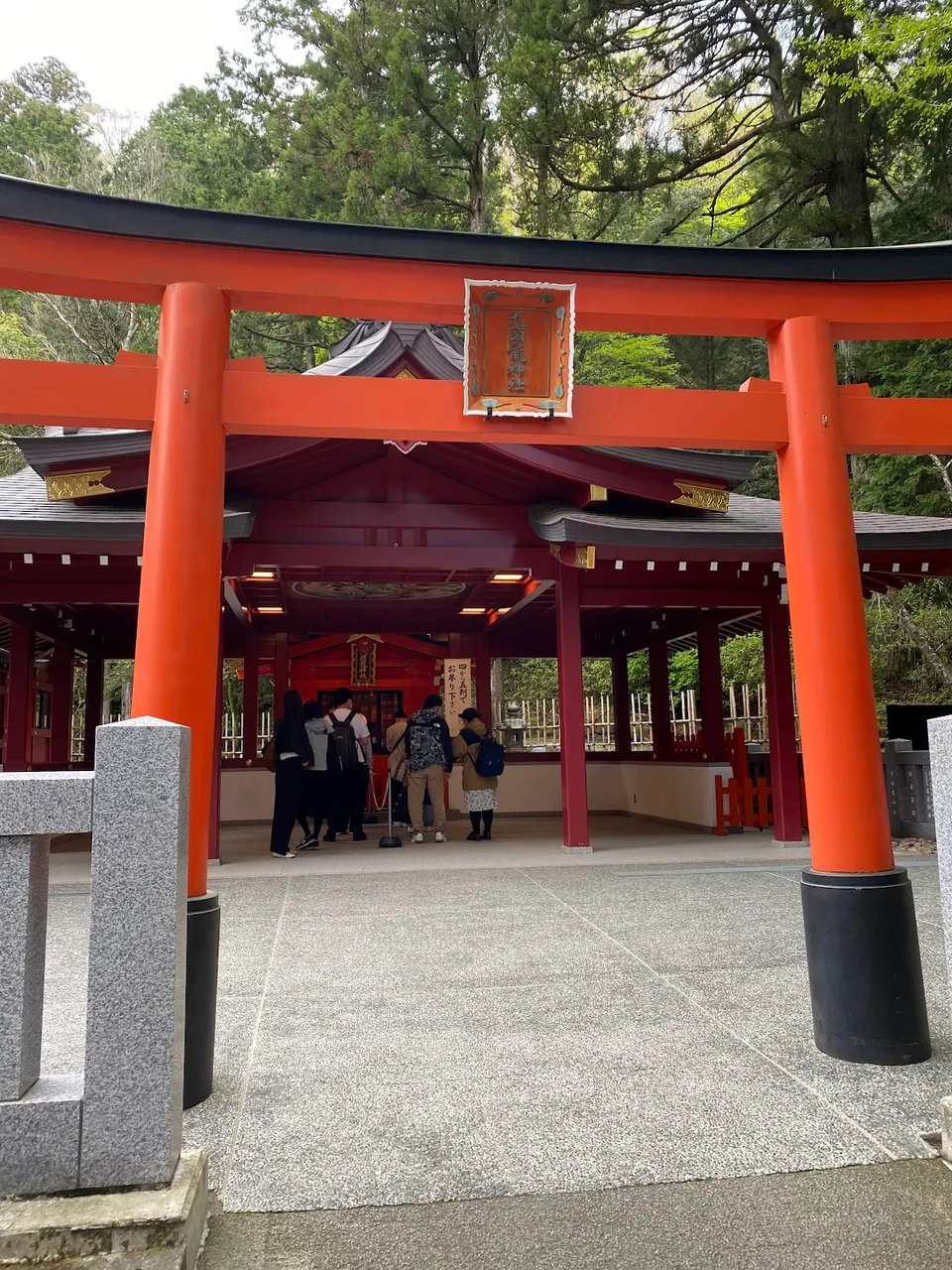
I saw some people bought a container so they can fill it from the shrine's water. Not sure for what reason but maybe it has some healing effects? Who knows?

After visiting the main shrine at the top, my friends and I went down, not through the stairs but through an alternative ramp (it looks like a ramp 😅) but need to be careful because it looks slippery when wet. At the end, you'll find a restaurant (or maybe food hall?) where you can have donburi while enjoying nature's best.
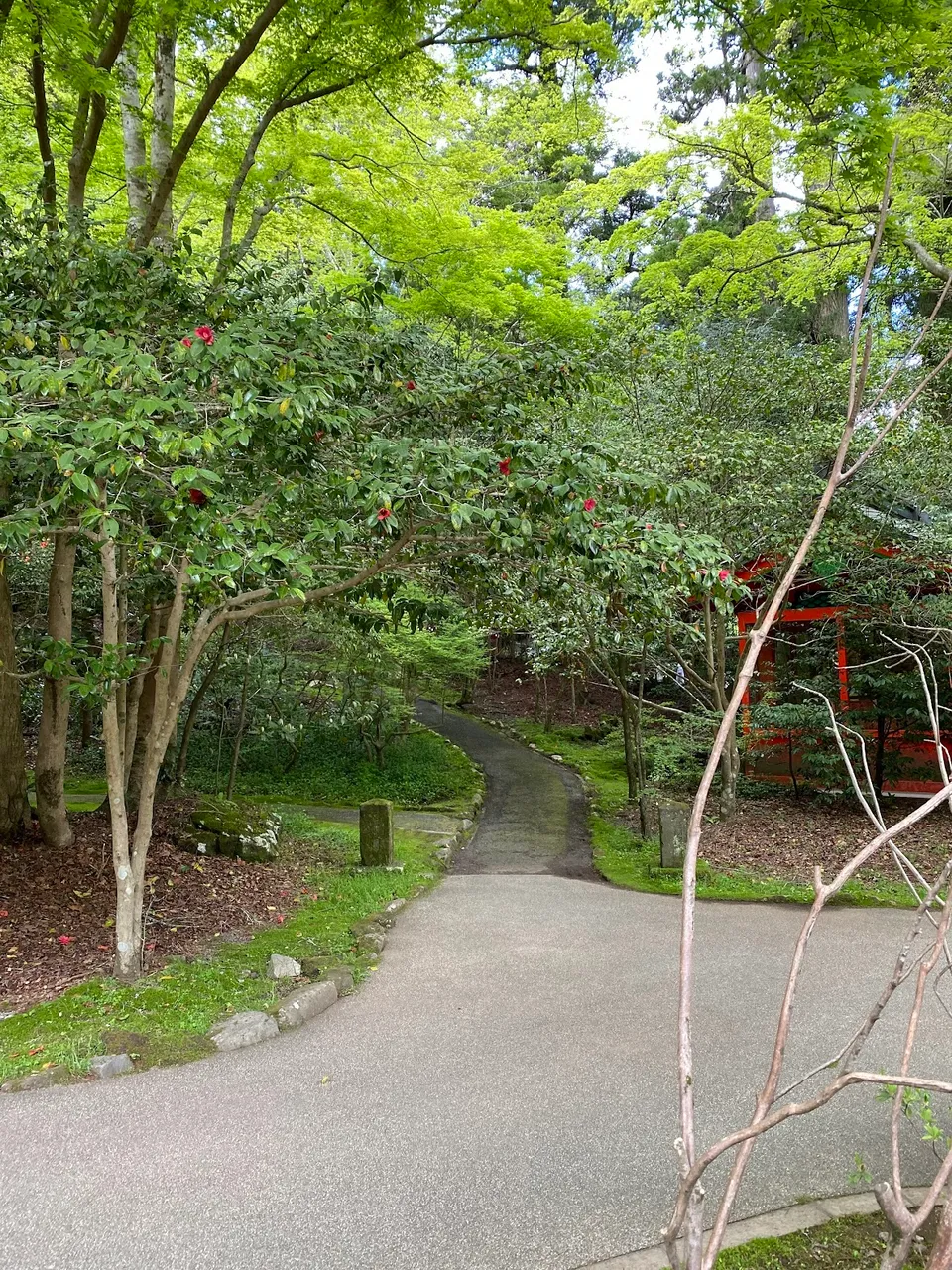
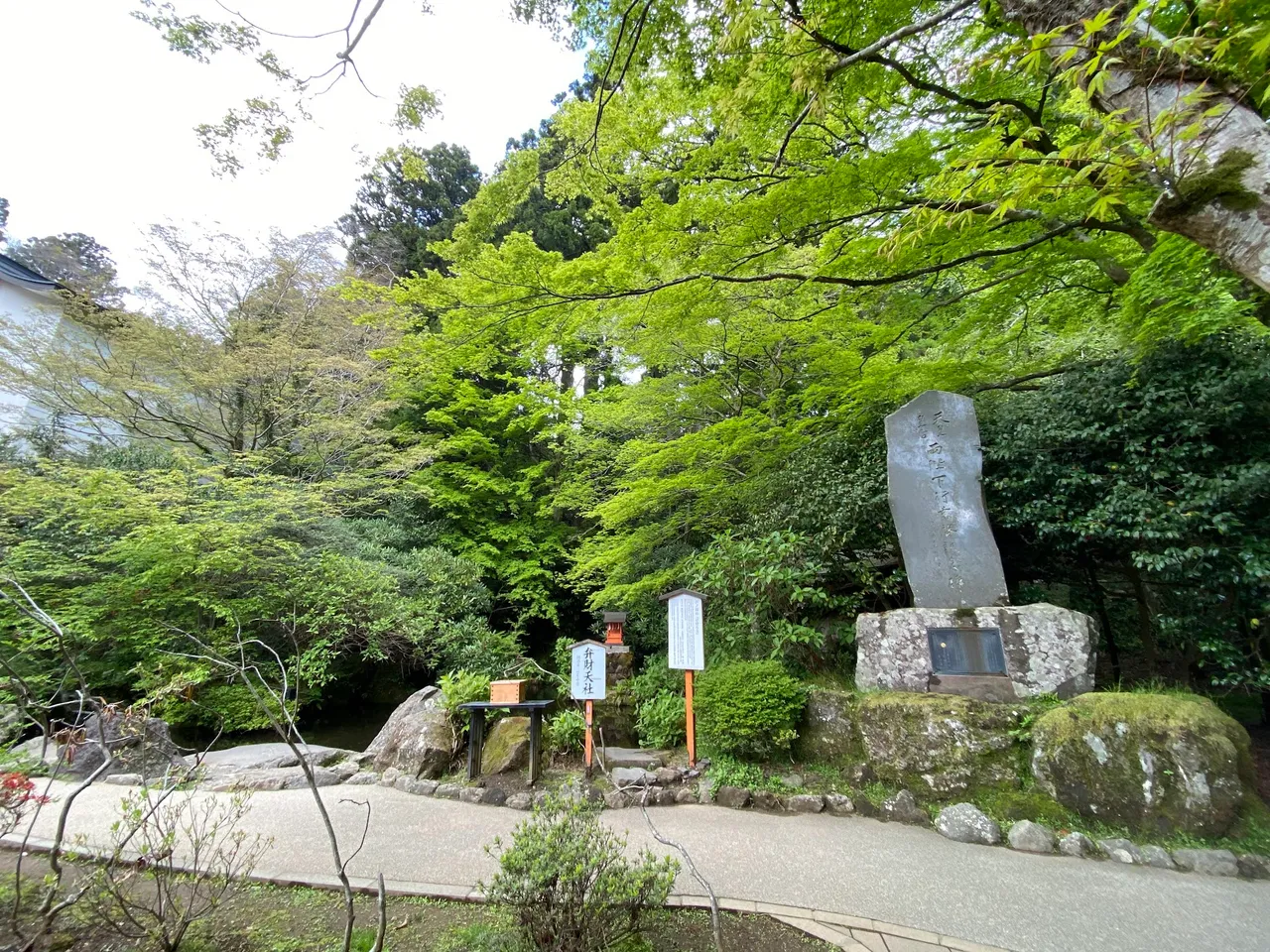
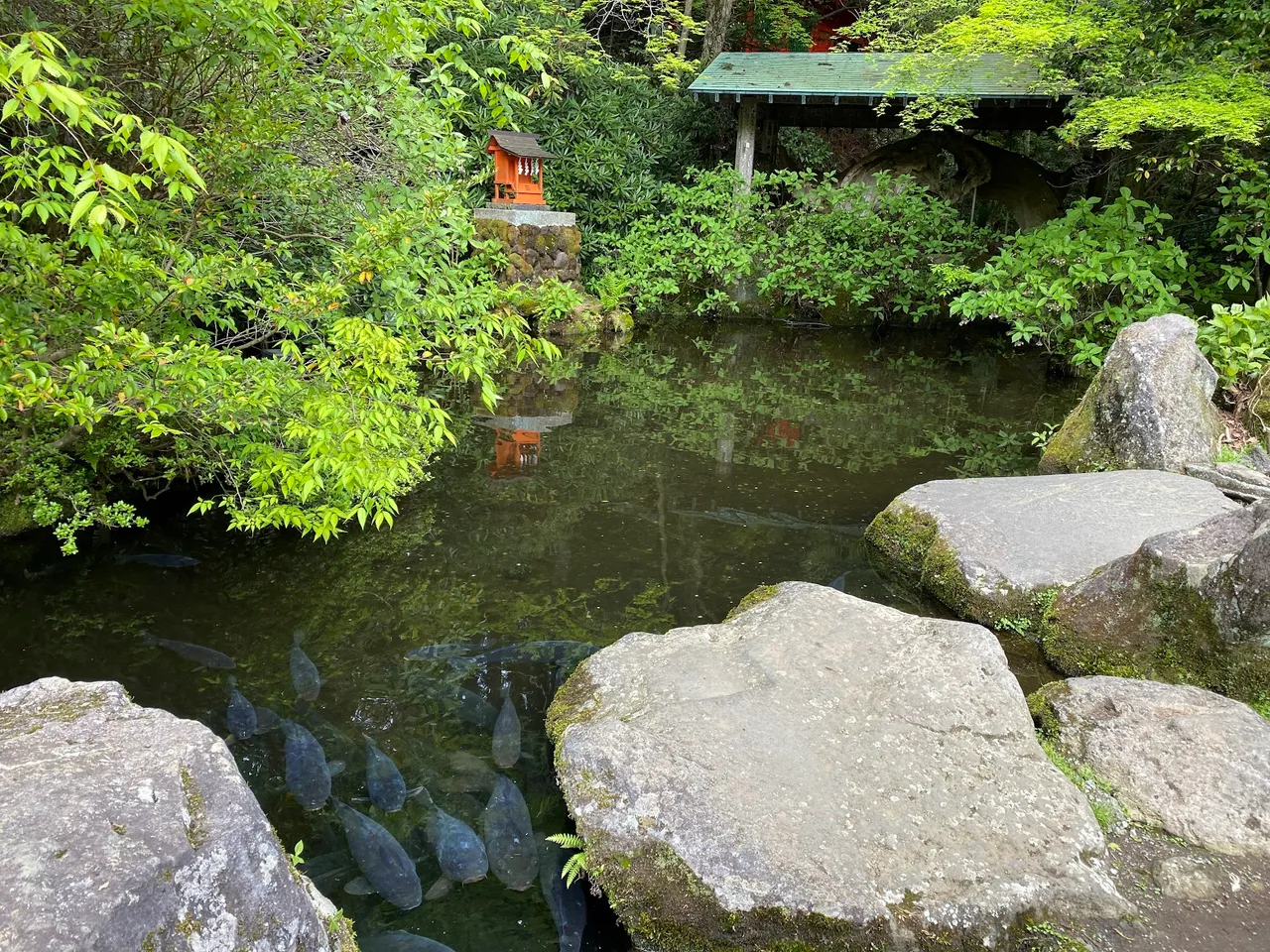
Going down near the lake, you'll find the red gate. This is known as the Red Gate of Peace (or 平和の鳥居, read as Heiwa No Torii). Be careful going down because there's a road separating the main shrine and the torii.
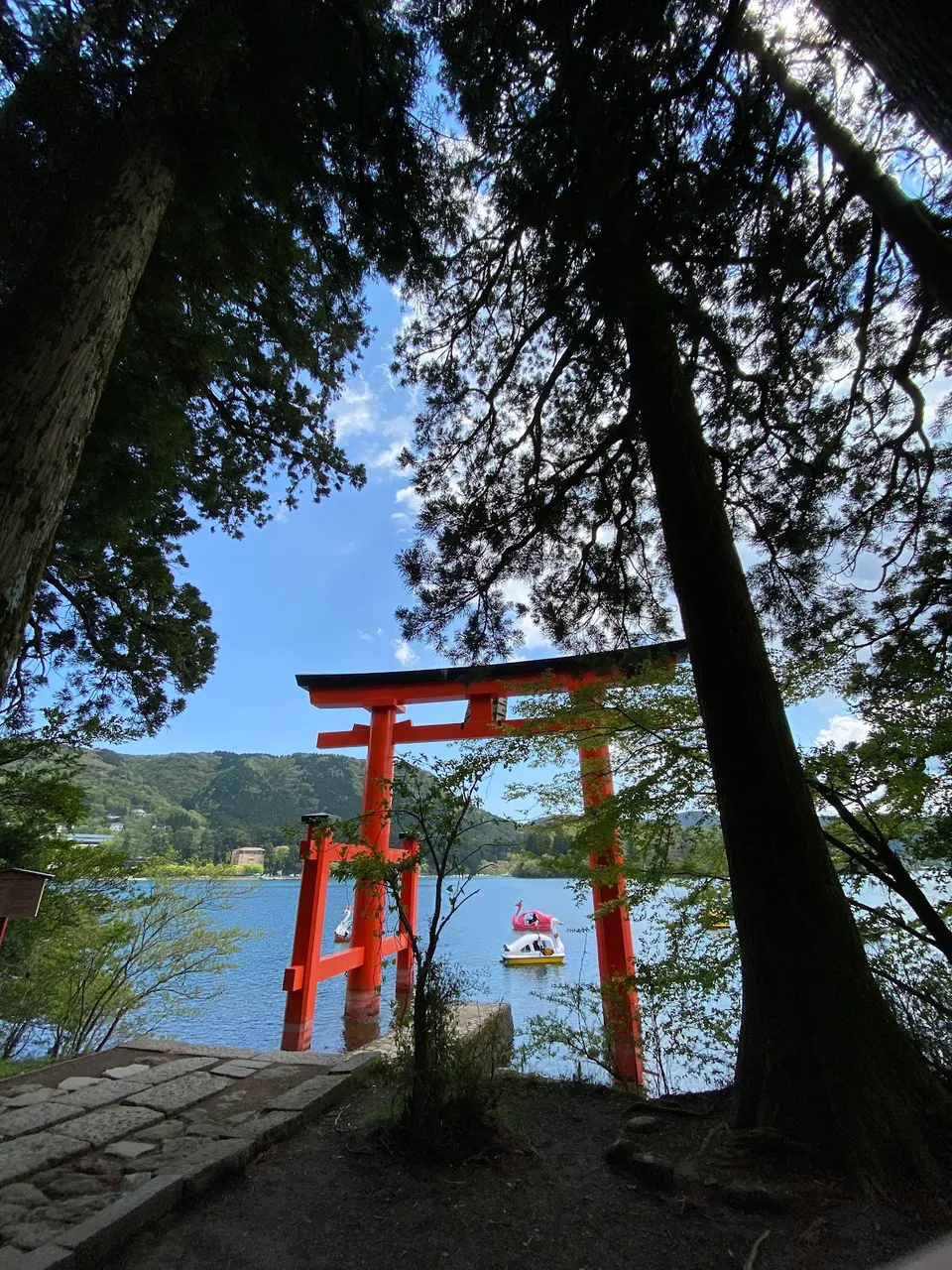
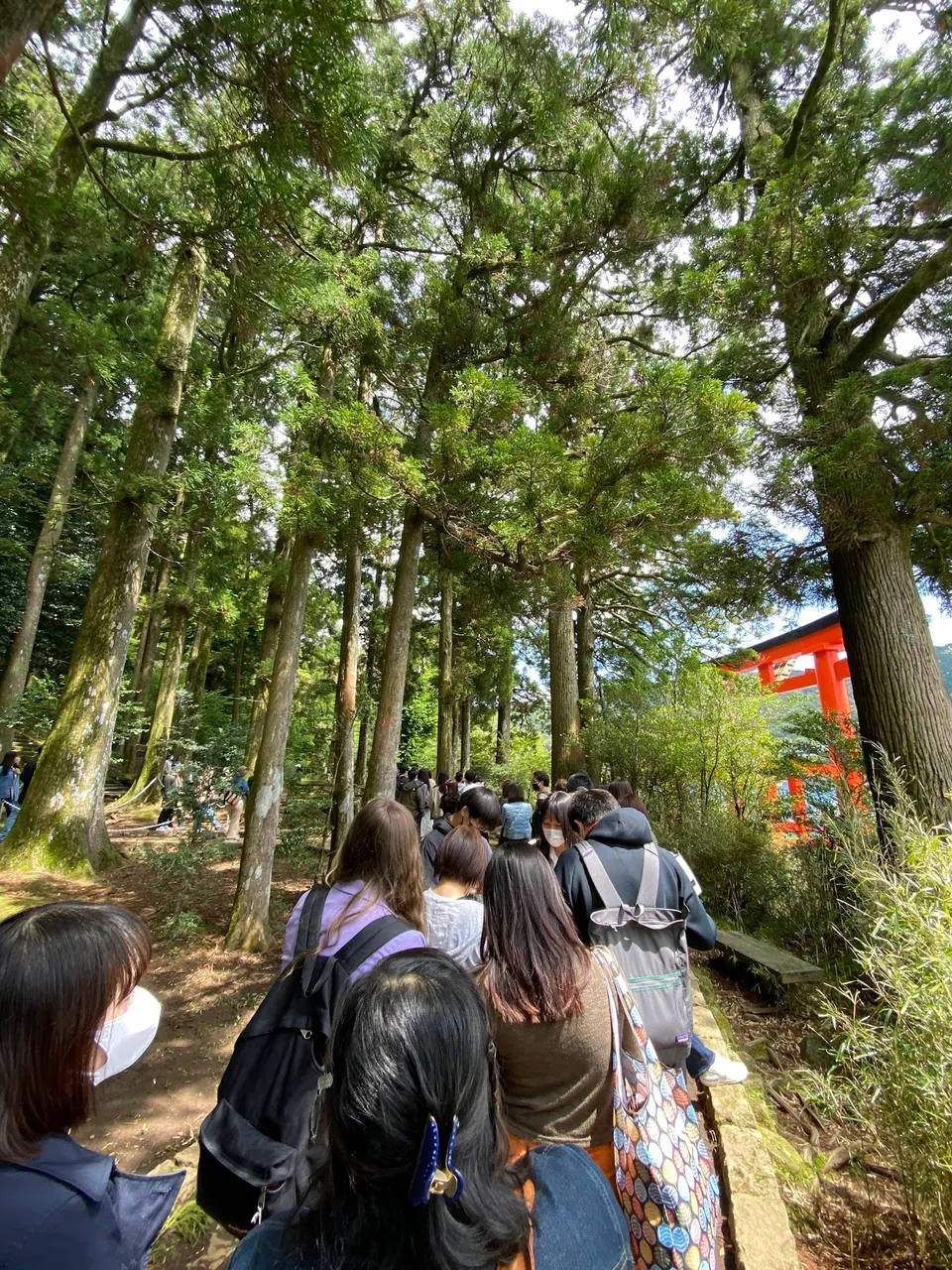
The line wasn't that long but we waited for maybe 10-15 minutes for our turn. While waiting, I was busy being captivated by the view.
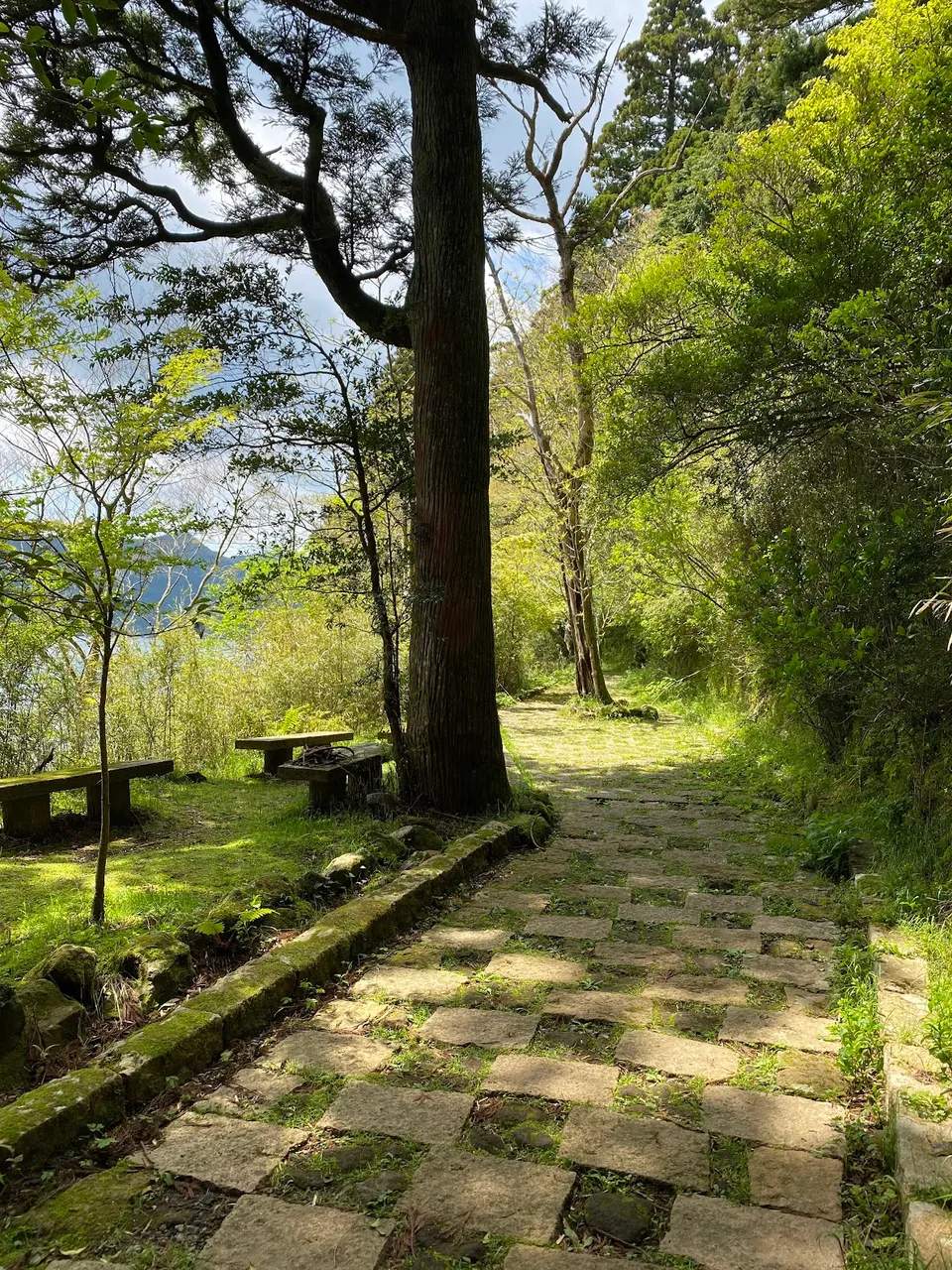
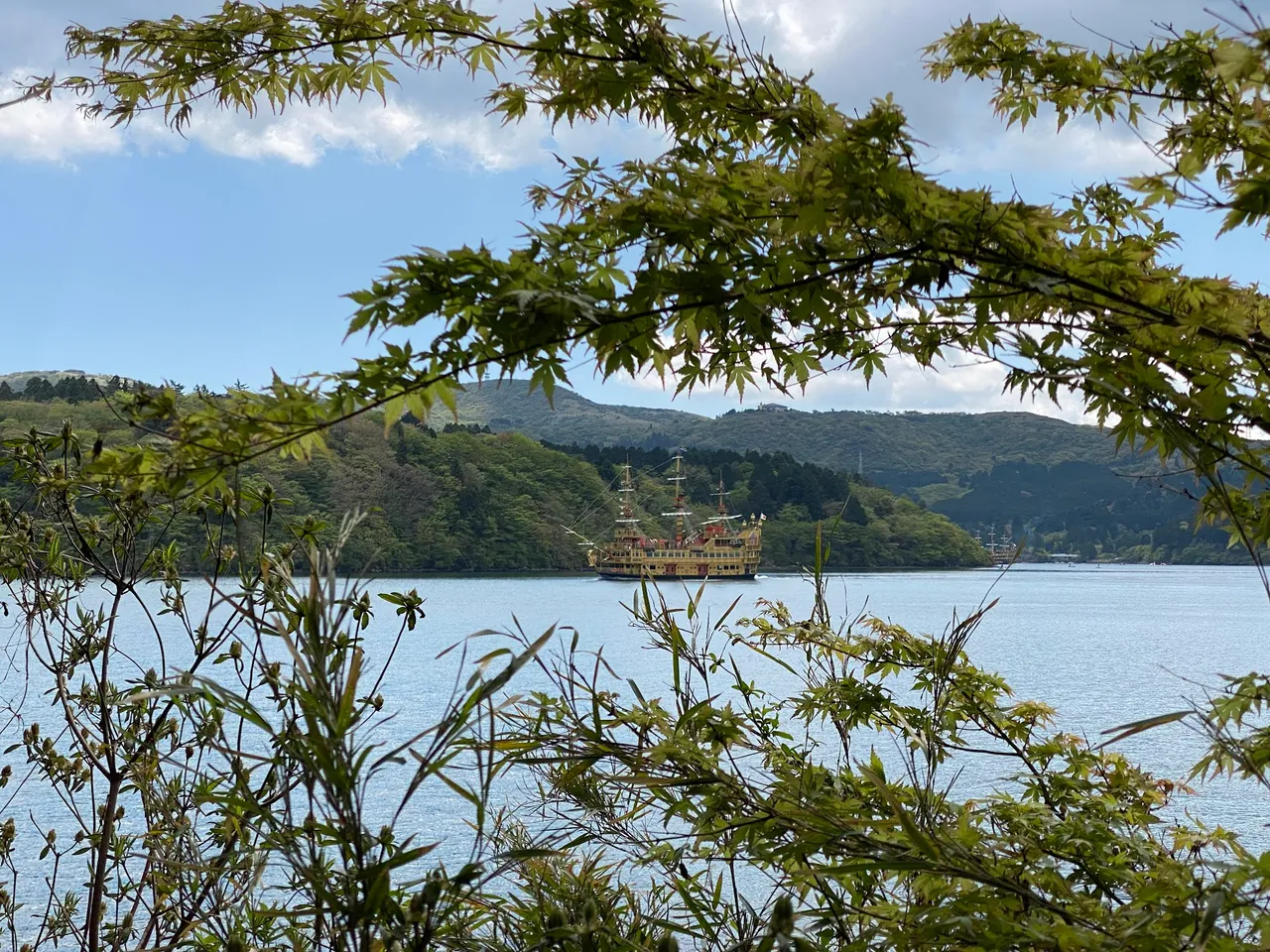
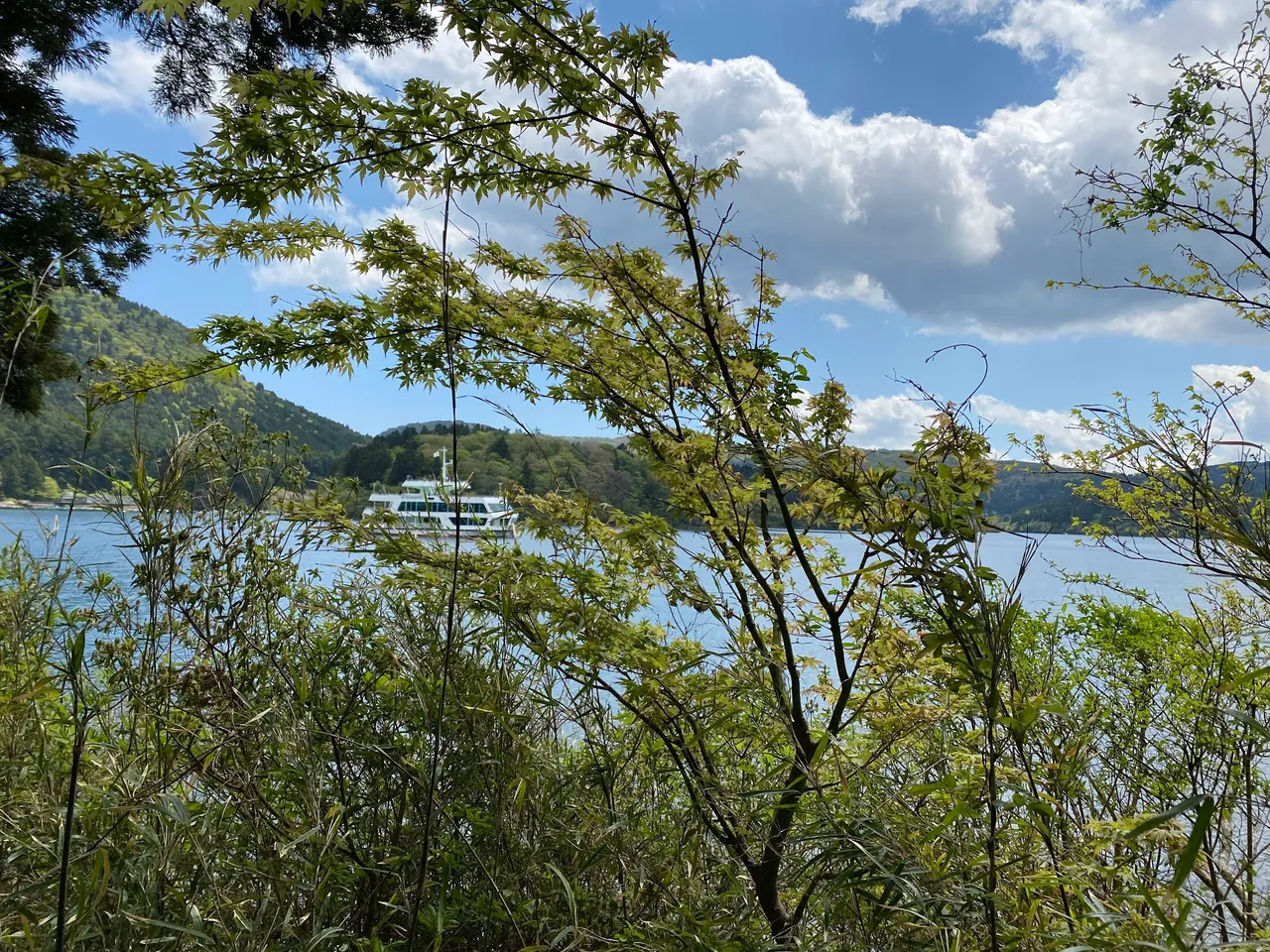
Finally, it's our turn. Few snaps and tadannn!
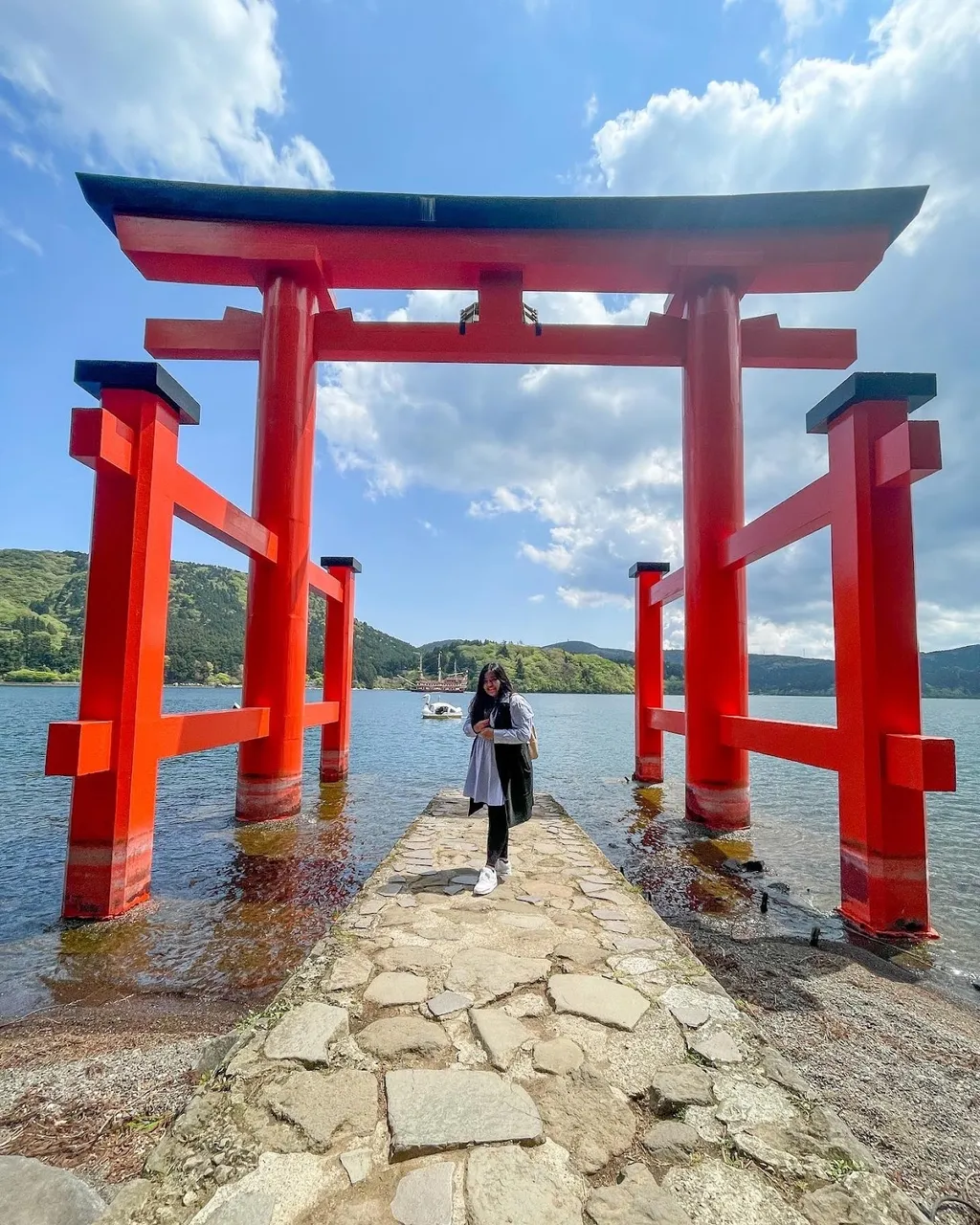

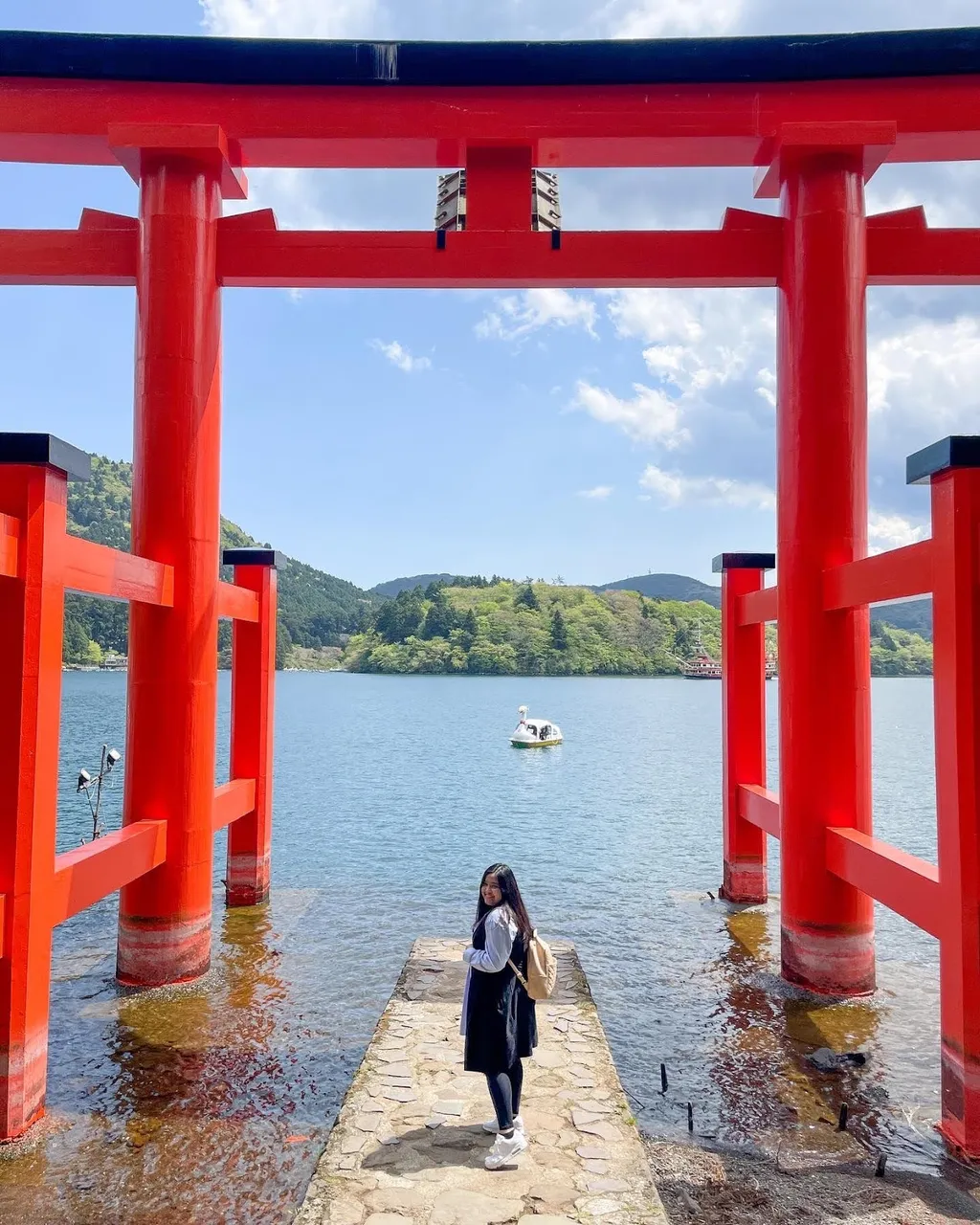
We ended our Hakone Shrine visit here. It was a great tour (with lots of exercise involved: walking, climbing, descending). By the way, the exit was interesting because it looks like some sort of adventure.
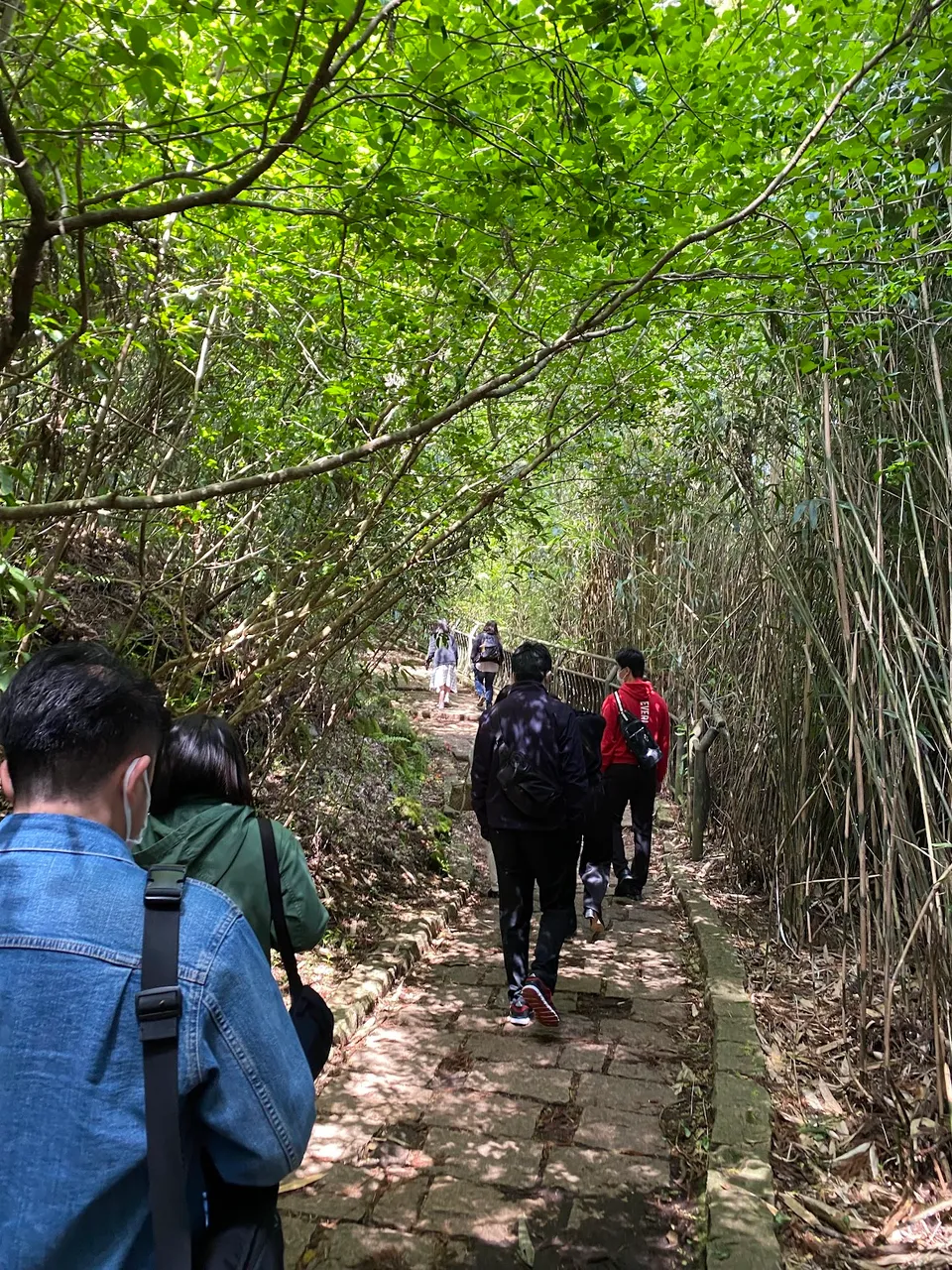
There is actually another shrine called Hakone Mototsumiya (箱根本宮) aka Shrine in the Sky that stands at the top of the Komagatake (駒ケ岳), one of the peaks in Hakone. You can reach it by the ropeway from Hakone-en (箱根園 or Hakone Park). It is said that the mountains of Hakone are an object of faith for Shinto because this is the place between humans and gods. We did not go to Mototsumiya though but you can see a glimpse of it in the cover photo of this post.
Thank you for reading!
See you next time! じゃあ、またね!
Next, I'll be sharing our itinerary for this trip: Fuji Shibazakura, Hakone and Gotemba Premium Outlets.
To know more about Hakone Shrine, you can visit their official website, but it is in Japanese only.
All photos in this post are taken using my phone unless stated otherwise.